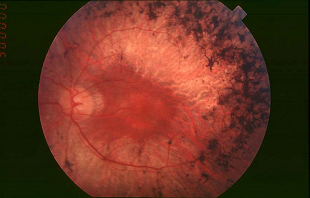Retinitis pigmentosa, an inherited disease causing progressive degeneration of the retina, is repsonsible for blindness in approximately 1.5 million people worldwide. Using patient-derived stem cells, researchers in the U.S. have now used the CRISPR/Cas9 gene-editing technology to correct one of the mutations that commonly leads to the disease. The team’s results were published yesterday (January 27) in Nature.
“Our vision is to develop a personalized approach to treating eye disease,” study coauthor Stephen Tsang of Columbia University Medical Center said in a press release. “We still have some way to go, but we believe that the first therapeutic use of CRISPR will be to treat an eye disease. Here we have demonstrated that the initial steps are feasible.”
The researchers extracted fibroblasts from a patient with X-linked retinitis pigmentosa. This particularly aggressive variant of the disease is often caused by a single mutation, making it a good candidate for precision medicine. The researchers used the fibroblasts to create pluripotent stem cells, which they then edited using CRISPR.
The team reported a 13 percent success rate at converting the mutated allele into the wild-type, despite the gene’s highly repetitive and GC-rich sequences. The study is the first to demonstrate CRIPSR’s potential to correct mutations involved in retinal disease in patient-derived stem cells. (A study published last week (January 19) in Molecular Therapy reported the correction of retinitis pigmentosa genes in rats in vivo.)
The authors of the present study wrote that their findings could lead to a “personalized transplantation strategy adapted to a wide array of retinal diseases.” However, Tsang acknowledged that the research is in early stages.
“There is still work to do,” he said in a statement. “Before we go into patients, we want to make sure we are only changing that particular single mutation and we are not making other alterations to the genome.”







